12 Feb 2023
Step-by-step painting 02
This is a step-by-step description for an oil painting of a lake in Alpes; 50x40 cm, oil on canvas.
This studio work is based on 2 reference photos.
It is made in three painting coats, in three consequent workdays.
Day 1
For this landscape, I do not use any underpainting (it is an artwork of small size and I did not want it to last more than several days of painting and drying; so just a choice for a quicker result).
I start directly by modelling the whole first layer with colours and composition.
I make attention to the aerial perspective while choosing my colours: the mountains on the horizon are mostly of blue colour, with some hues of beige and green. The second plan is more green and beige with a lot of white tint and some blue hue; and the first plan is composed of slightly tinted hues of green and yellow.
Water colour change mostly for the shadow and reflection. For the third plan, I use the same colours as for the mountains but just a bit more blue-green tinted. The second plan shows a pure turquoise nature of an alpine lake, a bit tinted beige. And the first plan is beige tinted blue and green, to show the bottom of the lake, covered in rocks.
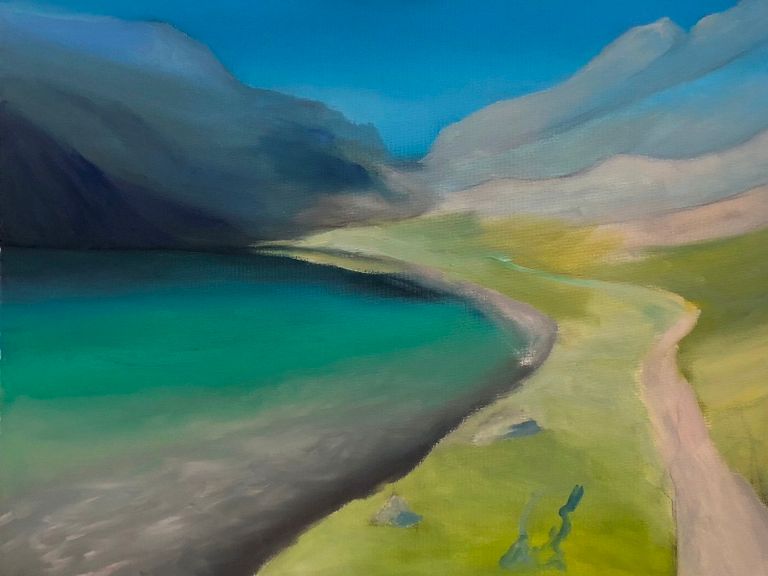
There are 13 colours used for this painting.
As a seascape artist, I love to have some exotic already mixed blues and greens; and I use them a lot. You can use any other colour mixtures, just make sure you enjoy your colours! (This is exactly how I buy them - I just choose ones that I love looking at! Finally, I love looking at my pictures when they are done - as they are composed of colours I loved:)))
So, my colours are (see the illustration below):
First group is composed of three blues:
- Blue Rex (sky, and every shadow, especially snow shadows, plus green for grass)
- Cerulean Blue (sky only! and some green grass)
- Prussian Blue (water, shadows and green grass)
Second group: My BLACK mixture:
- Ultramarine Blue
- Burnt Umber
Important: I always use the two ones to make my Black or grey, I try not to use achromatic blacks in my painting. This mixture lets me choose the tone of the black - to make it warmer (more umber) or colder (more ultramarine); I use them in shadows and just as black.
Third group: these are my exotic blue-greens for water:
- Blue Turquoise
- Green Veronese
Fourth group are my beiges:
- Sienna earth
- Mars Orange
- Warm Grey
(you can mix your own beiges or choose the other ones. Again, I just love their colour)
On the second row, I have two yellows:
- Cadmium Yellow
- Pale Yellow
and I use them to make different greens with all four blue colours.
Add Titanium white - and you have my complete palette for this painting :)
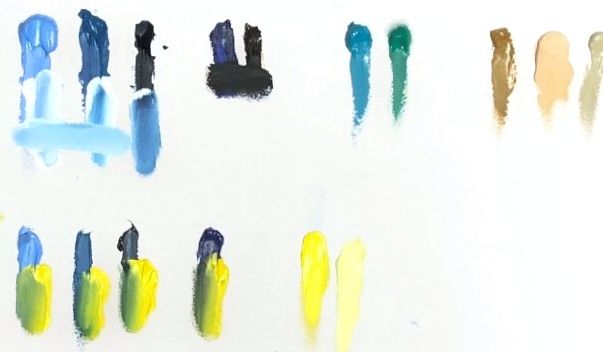
I try not to premix colours on the palette. Instead, I mix them directly on the canvas.
Here is an example of a mix for shallow water: Blue Turquoise + Pale Yellow + Warm Grey. Again: mixed direct on canvas, to create a sort of invisible differences in tones of the water's colour...
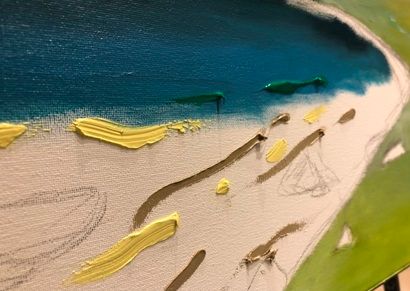
The first layer of the painting took me 2 hours to be completed.
I leave it to dry for a night (for a day in my case as I paint at nights mostly)).
IMPORTANT: I never use any liquefying or fast-drying mediums! I always work with pure paints, using just a bit of linseed oil to draw small details. So my paintings take 8 hours to dry between every layer. I put the following coat when the first is not touch-dry yet, but well-stabilized enough to be retouched. If you use some special mediums - you may be able to manage your painting time differently!
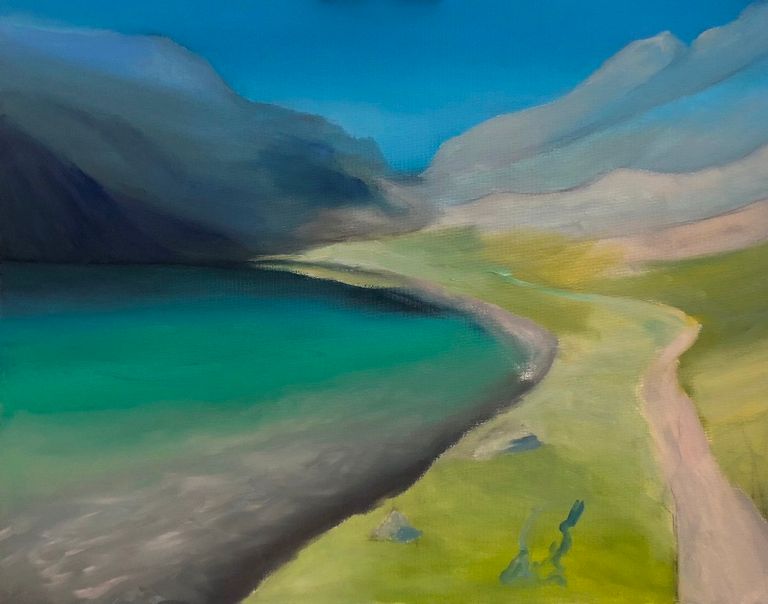
Day 2
This day of work is the most productive of all!
I start, happy, and I paint snow and shadow in the mountains!
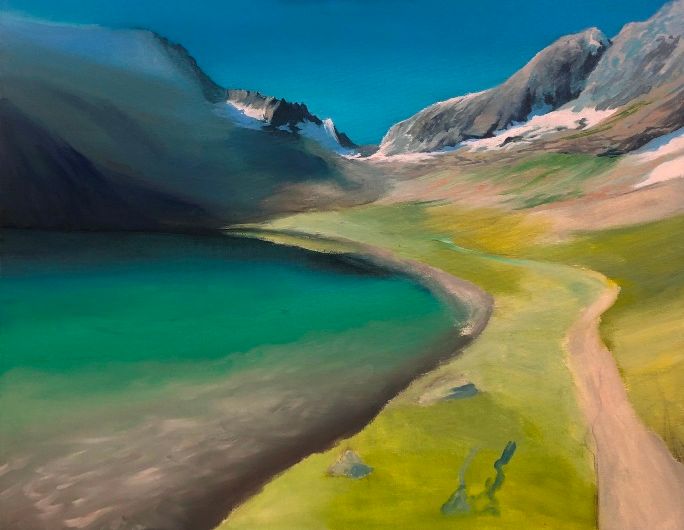
For the snow - it is easy: Titanium White where there is sunlight and Blue Rex in the shadow - a very nice contrast!
I usually say that you cannot use pure white colour for the objects on the horizon, because of the aerial perspective - white is never really white in distance. But this is a good example where I break a rule intentionally - I want my snow to be the shiniest part of my painting; and I make it bright, sunlit and pure white.
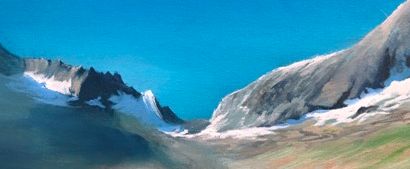
I make all the small details in the mountains, without being obsessed with details, of course. Mountain painting (as a seascape) gives you this magnificent possibility to be abstract in some things - so I just touch the canvas again and again, almost inventing my landscape on the third plan.
Then I add some rocks (beiges + white, shadows in beiges + blues) on the path and in the grass.
And now it's time for water!
I start by drawing some almost abstract forms of slightly visible rocks on the bottom of the lake.
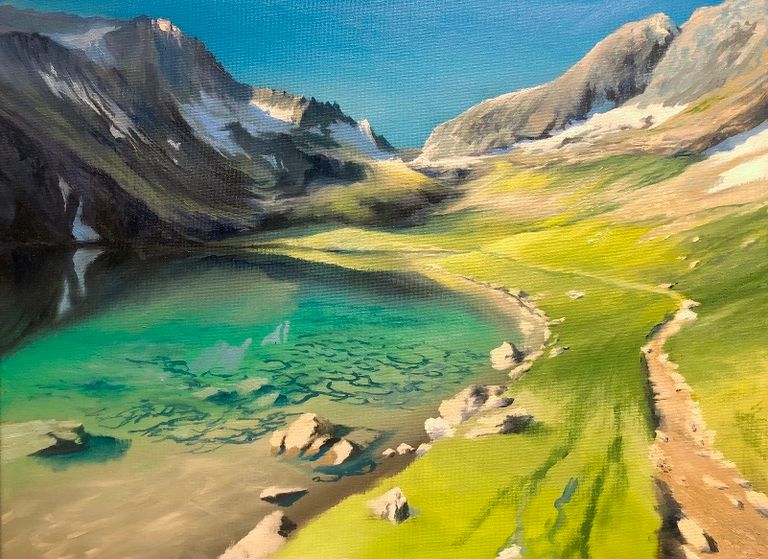
What is important: underwater my lines are blue-green on the third plan; and they become blue-brown on the first plan.
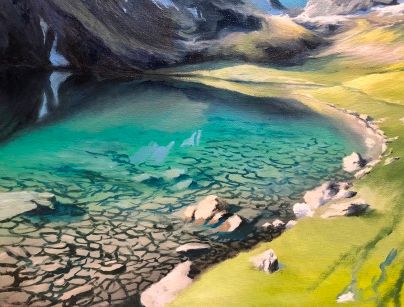
Here is the result:
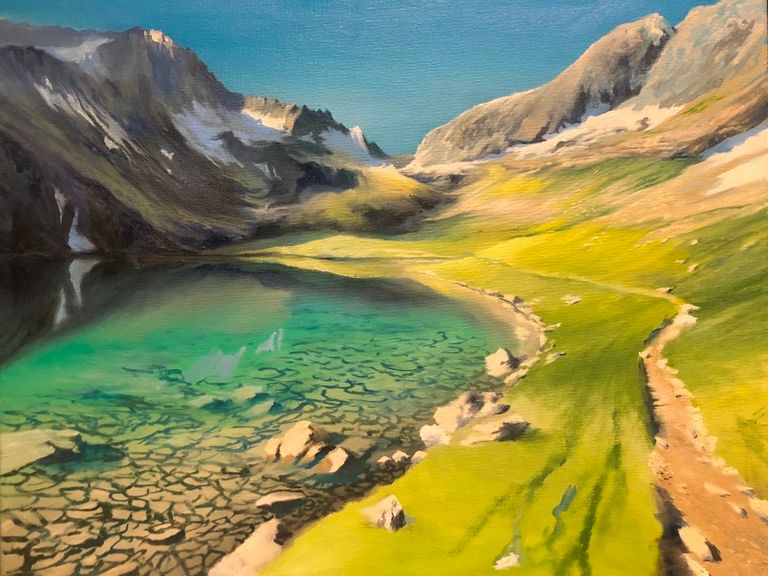
And now, I take a dry clean brush, and I smudge the edges of the underwater lines irregularly:
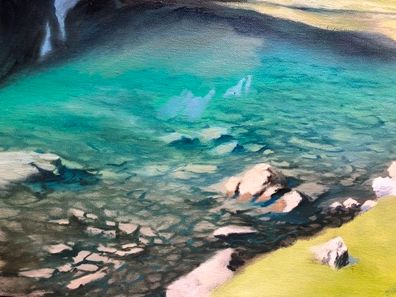
The result:
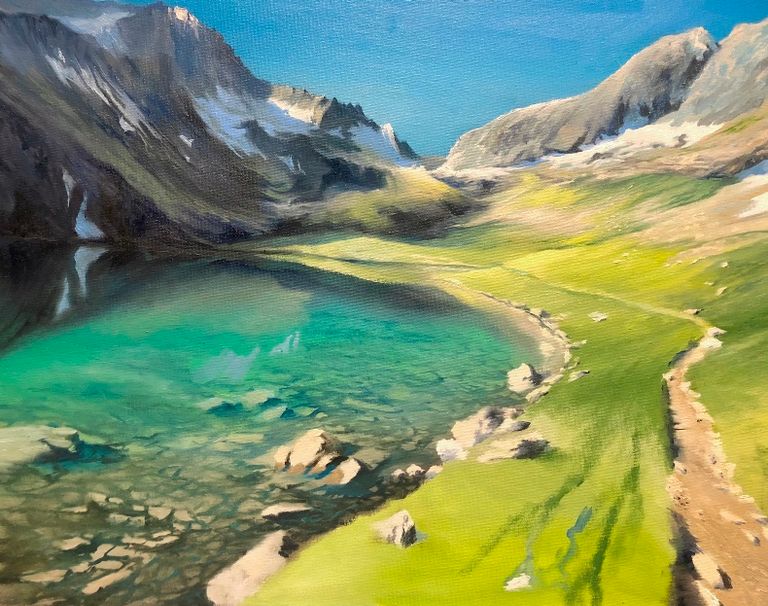
What do I have after the second day (second night))?
I spent 8 hours painting all the third plan, my mountains. They are in their almost finished form. I have my water, and my rocks and grass waiting for the final glazing and details. I cannot add them till the painting dries a bit.
Day 3
The painting is not touch-dry yet, but yesterday's layer is already well stabilized on the canvas.
I can start my details!
On the last day of work, I spend a lot of time retouching my rocks on the bottom of the lake - I make those that are closer to the surface to be warmer than those that are deeper.
I model the rocks on the path and boards of the lake.
I cover the first plan of the path with some warmer and purer hues of beige. I add Prussian Blue shadows of the grass on the path. That's a fun thing to do!
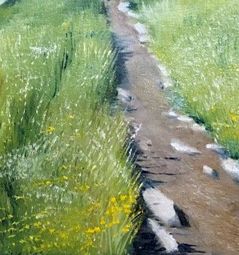
And I finally model my grass and some flowers with a Fan brush.
IMPORTANT: I never ever use a fan brush for anything except: (1) Flowers in the grass; (2) Foam flying above the wave on the wind. NEVER in other circumstances! :)) If you want your landscape, grass, leaves, and trees to look realistic - you have to paint their details with all other types of small brushes, but not a fan one!
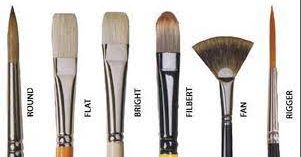
As a final touch, I add reflection of the mountain snow on the water surface in Blue Rex colour.
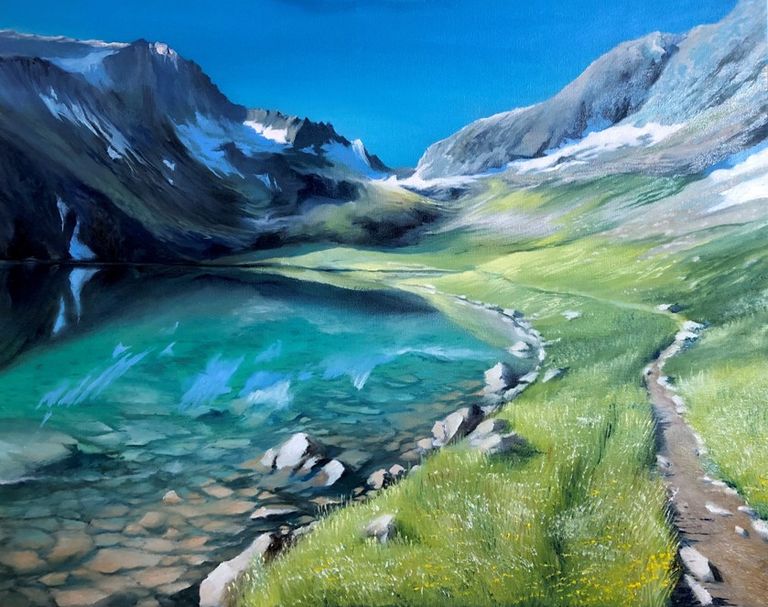
I hope you enjoy the painting result!
Try to do the same and send me a photo of your work; I will be happy to add it to the article with a link to your website or Instagram page!
© Bogacheff Marina. France, Switzerland. 2023
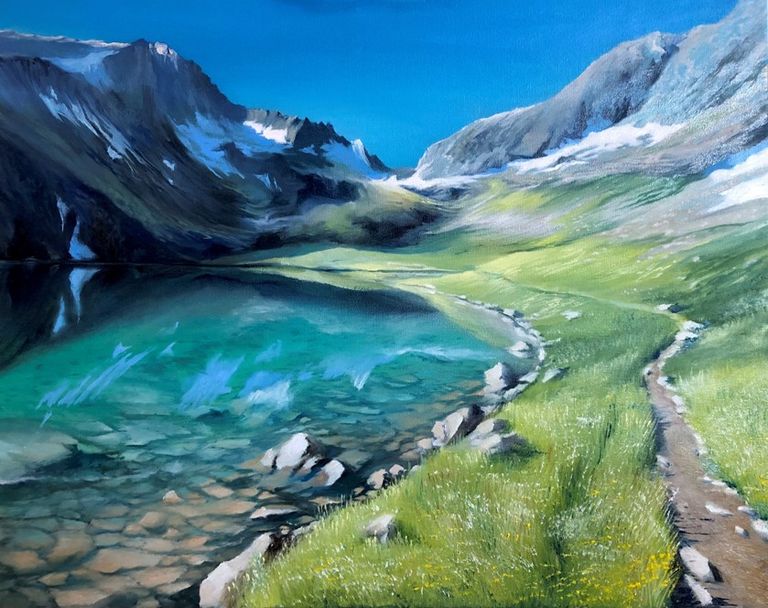
Marina Bogacheff, 50x40 cm, Oil on canvas